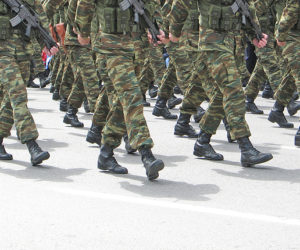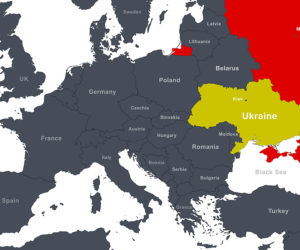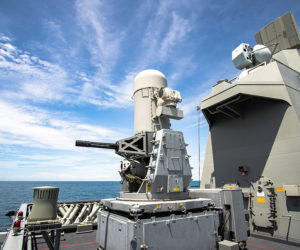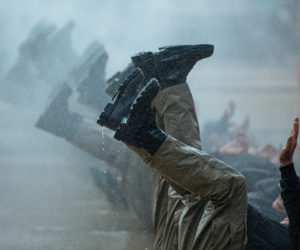
Sorry, your browser is not compatible with this application. Please use the latest version of Google Chrome, Mozilla Firefox, Microsoft Edge or Safari.
Defense content

C-NOte #3
This message outlines the Navy’s role as a cornerstone of national power, emphasizing readiness, deterrence, and global presence across all domains. It highlights how integrated forces, modernization efforts, and disciplined…
Learn More


The TRIAD
This publication offers a close look at the people, systems, and partnerships that sustain the nation’s nuclear deterrence mission. Through operational updates, international collaboration, training initiatives, and modernization efforts, it…
Learn More


Driving Innovation: Propelling the U.S. Department...
This white paper explores how hybrid-electric propulsion could reshape the U.S. Department of Defense’s tactical vehicle fleet. It examines historical lessons, current operational challenges, and the strategic risks of relying…
Learn More


Icebreaker Collaboration Effort U.S. National...
This national workforce development plan outlines how the United States will build and sustain the skilled labor needed to design and construct polar icebreakers domestically. Developed in coordination with international…
Learn More


Pounds for Pain
The modern rifle squad faces increasing physical demands as evolving threats and new capabilities add weight to every mission. This article explains how improper load management reduces mobility, situational awareness,…
Learn More


Threat Focus: Salt Typhoon
Salt Typhoon represents one of the most persistent and sophisticated state-sponsored cyber threats targeting U.S. and allied networks. The group quietly infiltrates telecom, government, and military systems, using advanced malware…
Learn More


Transforming the Public-Sector: Quantum-Powered...
Quantum computing is emerging as a practical tool for improving government efficiency and mission success across logistics, national security, infrastructure, and public services. With the ability to solve highly complex…
Learn More


Space-Based Intelligence in a Turbulent World
Today’s global environment is marked by rapidly escalating conflict and expanding access to advanced technologies, challenging traditional security models. Governments now rely on real-time, space-based imagery and AI-driven analysis to…
Learn More


Tracking the Components of Missiles and UAVs Used...
This report uncovers how Russia, Iran, and North Korea continue to source critical missile and UAV components through complex global supply chains despite international sanctions. Drawing on field investigations in…
Learn More


The Scale of Russian Sabotage Operations Against...
This report investigates how Russia, Iran, and North Korea have sustained their missile and UAV production despite extensive international sanctions. Using battlefield evidence from Ukraine, the study reveals how foreign-made…
Learn More


Taming the Hegemon
This report explores how Chinese military strategists view and prepare for potential U.S. intervention in a Taiwan conflict. It reveals that the People’s Liberation Army (PLA) assumes U.S. involvement is…
Learn More


Weapon System Sustainment
The GAO found that the Department of Defense often lacks the intellectual property and data rights needed to effectively sustain major weapon systems. Programs struggle to plan for technical data…
Learn More


Cyber Security Risk Management Construct
The DoD’s Cyber Security Risk Management Construct outlines a lifecycle approach that blends DevSecOps, continuous monitoring, and mission-focused assessments. Instead of treating authorization as a one-time hurdle, it emphasizes real-time…
Learn More


Army Directive 2025-18
The Army has issued Directive 2025-18 updating appearance, grooming, and body composition standards. The policy emphasizes professionalism and uniformity, linking personal presentation to discipline and readiness. It clarifies grooming rules…
Learn More


Army Directive 2025-17
The Army has updated its Body Composition Program with Directive 2025-17, linking compliance with body fat standards to performance on the Army Fitness Test (AFT). Soldiers who score 465 points…
Learn More


